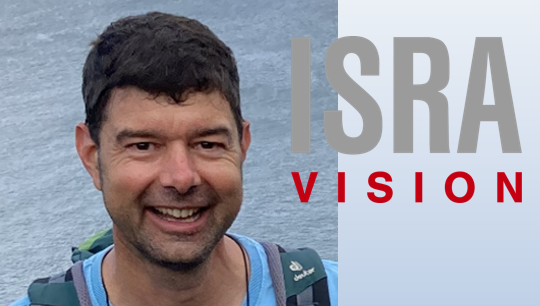Hello to everybody! Sabela nominated ISRA, so I am happy to be the next in line to spend time with you during your coffee break!
I am Christopher Berge from Constance at the Lake of Constance, at the border to Switzerland. I studied physics in my hometown Hanover, and made my first solar cell at the ISFH in Hamelin in 1997 – 2×2 cm² using photolithography for inverted pyramids and evaporated metal contacts on FZ Silicon. So much has evolved since then…! After university, I spent 1 ½ years with a EC TMR fellowship at ENEA Casaccia in Rome, on UV optical coatings, before starting a PhD on solar cells in Stuttgart. Afterwards, I joined a small company called GP Solar in Constance, and I have been with GP Solar and in Constance ever since – even though GP is now merged fully into ISRA VISION. We have installed inspection systems all over the world, but PILATUS is the first EU project where I am directly involved in, and I am excited to see how our expertise will contribute to the success of a new European solar era!
What was your original motivation to become a researcher/project manager?
Back in school, in the 1980s, I was already fascinated with solar cells and clean energy. I was not dedicated enough to pursue photovoltaics through my physics studies, and I was already buried deeply in femtosecond pulse laser ablation when I finally discovered that there actually was a solar research institute affiliated to my university… the ISFH. I switched my focus, started my diploma work there, and since then, I am (mostly) involved in solar – and feel good being one of the “good” people.
What is your (main) research area today?
As a vision company, ISRA VISION supplies camera inspection systems for inline quality control in solar manufacturing under the brand name “ISRA VISION GP Solar”. I was involved in the development of this product line, and as one of the few persons inside ISRA that has a “solar process” background, I am responsible for the solar products, strategy, identifying technology trends and requirements, and wielding this into our corporate development roadmap.
What is the main focus of your team in PILATUS?
As a supplier for inline quality control, we want to contribute to improving yield and reducing cost in solar manufacturing, by providing solutions for controlling crucial processes. As a vision system provider, we are “limited” to “what we can see” (including invisible things like infrared light). The IBC concept more than any other solar technology requires perfect alignment between different functional layers – which we expect to “see” with our products at the crucial process steps.
From all your activities within the project, what are you the most proud of/keen to share with the public?
There is the general concept of IBC with interdigitated contact regions on the rear side, and a multitude of different processing approaches and cell designs to realise it – no IBC design looks like the other. We put a lot of effort into finding a smart way to deal with the different designs, using a generalized approach that enables fast and easy setup of the inspection systems, regardless of the contact layout, process sequence, or materials used.
How do you expect the PILATUS results will impact your organisation and the PV sector in Europe?
I do believe that there needs to be big PV industry everywhere in the world, and I want to be involved in all these regions. However, I hope that with PILATUS, we make a strong step towards a sustainable European Manufacturing and Supplier Industry, and the expertise we gain is not only shipped to other regions in the world, but fuels local growth. Development and growth of expertise is easier with close industrial partners in the same time zone, with much less than 12+ hrs flight time.

